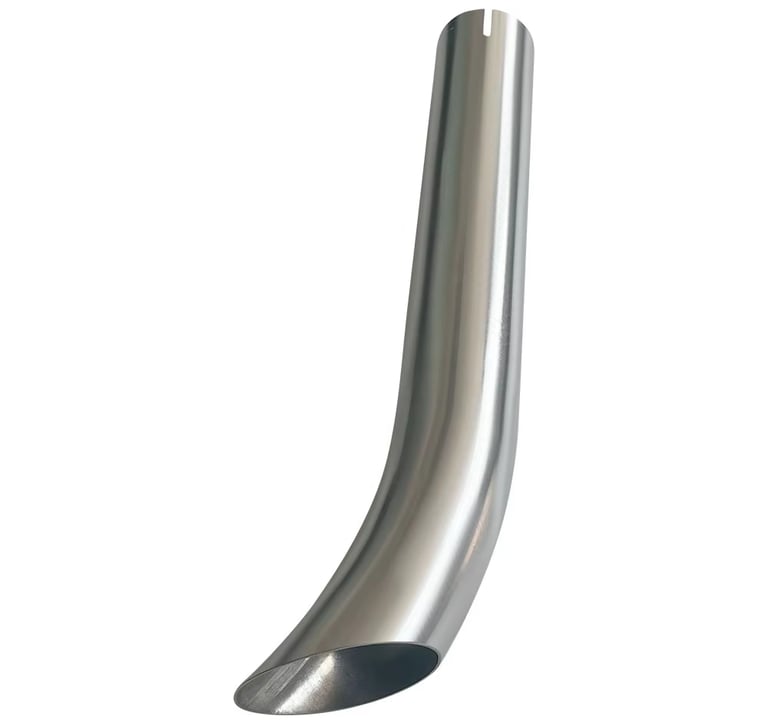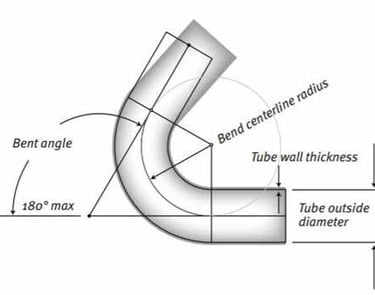Titanium Tube Bending Service
Understanding Gr4 Titanium Tube Bending: Key Factors and Methods
CNC TUBE BENDING SERVICES
1/14/20252 min read


Gr4 (Grade 4) titanium is a commercially pure titanium with high strength and corrosion resistance, making it suitable for industrial applications, including medical, chemical, and aerospace industries. However, its bending performance is influenced by several factors:
Key Characteristics of Gr4 Titanium Affecting Bending
1.Material Strength
Gr4 titanium has higher strength compared to lower grades like Gr1 or Gr2. While this improves durability, it reduces its ductility, making it more challenging to bend without cracking.
2.Ductility
With moderate ductility, Gr4 titanium can be bent, but the process requires precision to avoid deformation or fractures. Pre-heating may be necessary for tighter bends.
3. Elastic Modulus
Titanium's relatively low elastic modulus results in significant spring-back during bending. This requires over-bending to achieve the desired angle.
4. Thickness and Diameter
Thicker and larger-diameter Gr4 titanium tubes are harder to bend and require specialized tools and techniques.
5. Bending Techniques
5.1. Cold Bending
Can be done for larger bend radii.
Requires careful control to prevent cracking due to strain hardening.
5.2. Hot Bending
Heating the tube before bending can improve ductility and reduce cracking risks. This is especially useful for tight-radius bends.
5.3. Mandrel Bending
Using a mandrel or internal support prevents tube collapse or wrinkling during bending.
5.4. Rotary Draw Bending
Ensures precision and consistency in bends, especially for high-strength materials like Gr4 titanium.
6. Challenges in Gr4 Titanium Tube Bending
6.1. Spring-back Effect
Titanium tends to return to its original shape after bending. Compensation is required during the process.
6.2. Risk of Cracking
Without proper tooling, tight bends can lead to surface cracks or deformation.
6.3. Surface Damage
The oxide layer on titanium is hard but brittle. It may crack during bending, reducing corrosion resistance.
6.4. Tooling Requirements
Titanium requires specialized tools that are resistant to galling and designed to handle its strength and elasticity.
7. Recommendations for Optimal Bending
7.1. Pre-heating
Heat the tube to 400–600°C to improve malleability for tighter bends.
7.2. Use Proper Equipment
Invest in mandrel bending machines or rotary draw bending systems.
7.3. Lubrication
Use titanium-compatible lubricants to reduce surface damage and improve bend quality.
7.4. Bend Radius
Use a minimum bend radius of at least 3–4 times the tube diameter to minimize cracking risks.
7.5. Stress Relieving
Post-bending annealing can reduce residual stresses and improve overall performance.
Conclusion
Gr4 titanium tubes are bendable but require careful preparation and advanced techniques due to their strength and limited ductility. By combining proper heating, precision tooling, and post-processing, high-quality bends can be achieved for demanding applications. Machiningfabtech has a lot of tube bending works and components, we are happy to share more information with you, if you are interested, talk to us now.


Follow Us
Contact
© 2024. All rights reserved.
Privary Policy
Refund Policy
